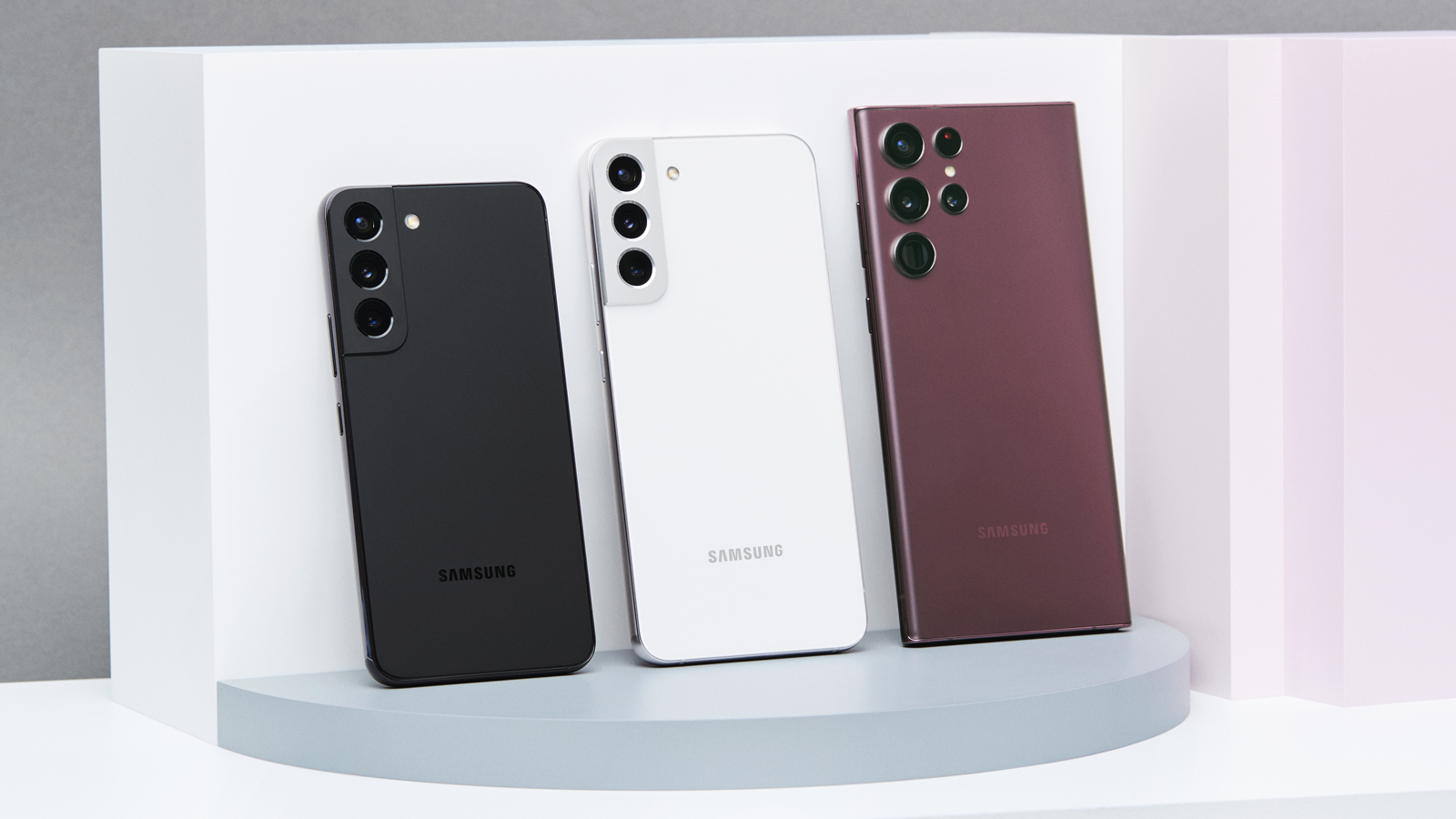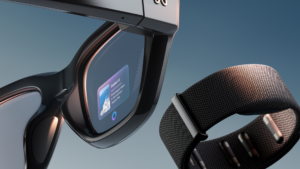While you don’t have to search far to stumble across wild Samsung Galaxy S23 rumours (a 200MP camera is being floated as a possibility), it seems like anticipation for Samsung’s next flagship phone is about to peak over the next few months. A cheeky battery certification for the Samsung Galaxy S23 Plus – likely the middle child of the three Samsung S23 models due next year – has indicated the current timeline for the Samsung S23 launch. And it aligns closely with how the South Korean tech giant released the Samsung Galaxy S22 series in Australia earlier this year.
That means we could be seeing the Samsung Galaxy S23 as early as February 2023. It’s a nice bit of intel for anyone who may be holding out to see what Samsung does to push Android forward into the next generation, especially considering Apple is gearing up to launch the iPhone 14 series in the next week and Google is primed to announce the Pixel 7 series sometime in the next month.
RELATED: Samsung Galaxy Z Flip5 & Fold5 – Release Date In Australia
Note that we’ll be updating this piece on the new Samsung phone throughout the coming months as more Samsung S23 rumours fly through. For now, read on for speculation on the release date, battery, performance specs, camera, design and price.
Samsung Galaxy S23 Rumours – Table Of Contents
Samsung Galaxy S23 Release Date
As reported by SamMobile, the battery for the Samsung Galaxy 23 Plus has already been registered with Safety Korea – the body that certifies all batteries in the country. Some trigger-happy tech fan – notorious Android leaker ‘Ice Universe’ – has managed to crawl Safety Korea’s database and found that the battery was certified as of September 6 with the same model number (SM-S916B) that has been the rumoured model number for the Galaxy S23 Plus.
Of course, all the above could be a massive stretch, but that’s typically how tech leaks work. There is an entire army of leakers out there constantly prowling the internet and various databases in order to provide as much pre-mature information as possible so consumers are acutely aware of various timelines and rumours. Ultimately, it helps people make decisions on where, and when, to invest their money in the latest gadgets.
And for the S23, that timeline looks to indicate a February 2023 release. Mind you, the Samsung Galaxy S22 officially launched on February 25 in the US, and then a week later launched in Australia on March 3.
Considering the Samsung Galaxy S22 Plus battery was certified in September 2021, this means in all likelihood Samsung is planning the same roll-out. Whether it’s earlier in February or later in February is the real guess, but at least we know that we should be seeing the Samsung Galaxy S23, S23 Plus, and the high-end Samsung Galaxy S23 Ultra, at least by the end of February. Whenever it does launch in the US, Aussies will see the Android phones go on sale a week later.
Samsung Galaxy S23 Battery
The battery was manufactured by Ningde Amperex Technology Limited, which is the same company that made the batteries for the Samsung Galaxy Z Flip 4 and Z Fold 4. Current rumours from a reliable Samsung and Android leaker suggest that the S23 Ultra will be getting a 5,000 mAh battery, which is the same size as the one that was used in the S22 Ultra.
Some of the world’s leading tech publications have already expressed a bit of worry here. Seeing as the S22 Ultra battery life came up a bit short in various performance benchmark tests. Although it wouldn’t make much sense for Samsung to not listen to feedback from the most recent high-end flagship and find ways to equip the S23 Ultra with more power efficiency. So at least if the battery isn’t changing in size, the software should, hopefully, mean better battery life.
Currently, the S22 Ultra capacity is rated for around 10-13 hours. That’s obviously not ideal for modern phone users. Nor is it expected from Samsung’s Ultra models. But Samsung could fix this in a number of ways. First, the company could tighten up the adaptive refresh rate so you can still get a speedy, fluid 120Hz without the battery drain.
Samsung Galaxy S23 Performance
Rumours concerning the specs for the Samsung Galaxy S23 models are light thus far, but there are still a few floating around. Primarily this surrounds the chipset being used across the S23 series. Some seem to think Samsung will actually be ditching its own Exynos chipset and heading back to Qualcomm to make use of its Snapdragon 8 Generation 2 chipset.
Importantly, it seems Qualcomm will be used across all three models, with Samsung abandoning its own proprietary silicone which has, overall, been marked as an underperformer both in terms of power and efficiency.
There has been no indication on internal storage or RAM but it’s assumed that the offerings will mirror the S22 models, so the base models will start at 128GB. Of course, you’ll get standard connectivity features as well such as GPS, A-GPS, Wi-Fi and 5G.
Samsung Galaxy S23 Design
The same leaker responsible for the battery leaks mentioned above has also indicated that the Samsung Galaxy S23 series will look near identical to the S22 series. There shouldn’t be any drastic changes to how any of the three models look, which isn’t necessarily a bad thing – the Samsung Galaxy S22 Ultra is one of the more attractive phones out right now.
According to the leaker, the Galaxy S23 will come with a 6.1-inch 1080×2340 display while the S23 Plus will have a 6.6-inch 1080×2340 display. The high-end S23 Ultra will get a 6.8-inch 1440×3088 screen. All these specs are aligned exactly with the equivalent S22 model, although it would be odd for Samsung not to at least throw a curveball here and do something decorative like up the brightness for better outdoor legibility.
Other than that, design is expected to be pretty much the same. From the fingerprint sensor to face detection, we shouldn’t see any dramatic changes in biometrics which is often one of the main reasons phone manufacturers shift around the design of their flagship phones. You’d hope we’re still in for dual sim as well – although it’s possible Samsung might opt instead for eSim, as Apple has with the iPhone 14.
Samsung Galaxy S23 Camera
The tastiest S23 rumour so far states that the Galaxy S23 Ultra could be getting a massive 200MP camera. I wouldn’t put it past Samsung to try and muscle out competitors when it comes to smartphone photography, so upping the stakes is entirely within reason here.
Currently, the only smartphone that offers a 200MP camera is the Moto X30 Pro, which was released just a few months ago. Having so many pixels would trump the already impressive 108MP sensor on the S22 Ultra and dwarf the 48MP primary shooter confirmed for the iPhone 14 Pro Max.
As expected, all cameras will have standard features like Digital Zoom, Auto Flash, Face detection, and Touch to focus. We’ll have to wait until more leaks come through before we get at some of the more unique features coming to the Samsung S23 cameras, from the telephoto lenses (that is, the zoom cameras) to larger sensors to let more light in.
Samsung Galaxy S23 Price
There have been no rumours so far on exactly what Samsung is planning to charge for any of the three S23 models.
Current pricing for the Galaxy S22 Ultra in Australia starts at $1,849. I wouldn’t expect the price tag to hike too much, but seeing as the iPhone 14 models are on average around $50 more expensive than the iPhone 13 models then I wouldn’t be surprised to see Samsung asking for at least $1,900 for its top-tier flagship.
Samsung Galaxy S23 Release Date – Frequently Asked Questions
When is Samsung S23 coming out?
The Samsung Galaxy S23 is rumoured to be released sometime in February 2023. As per the S22 series, the US will likely launch the phone a week before Australia receives all three models. If the rumours are true, expect the S23 models in Australia by, at the latest, early March.
Will there be a Samsung Galaxy S23 Ultra?
Yes, in all likelihood Samsung will be sticking with its current strategy and have three models made up the S23 series – that is, the Samsung Galaxy S23, the Samsung Galaxy S23 Plus, and the Samsung Galaxy S23 Ultra.
















